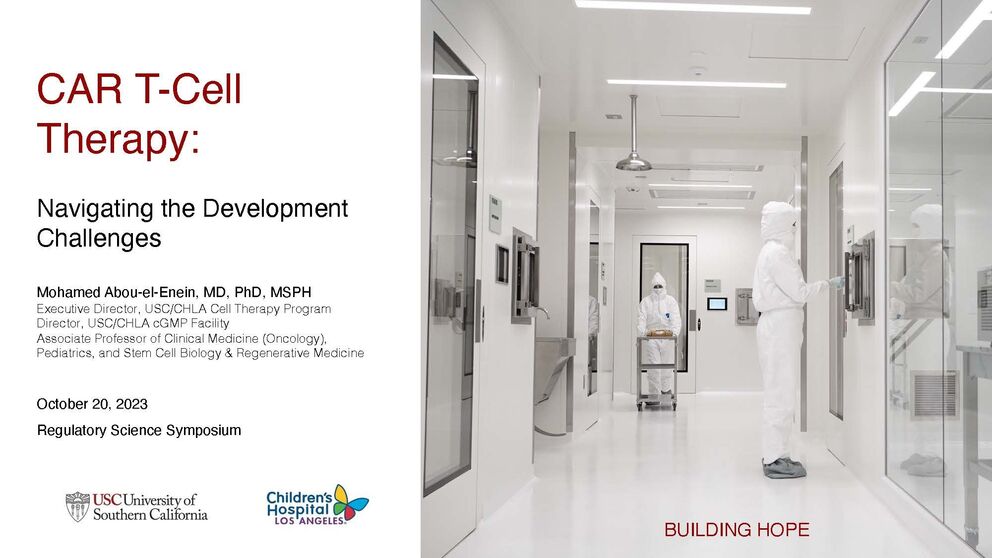Syllabus/Topics
- Introduction:
- Dr. Mohammed Abou-el-Enein
- Manufacturing process for the product is complicated and difficult outside of industry setting
- Good Manufacturing Practices (GMP) facility for Cell Therapy Products at USC
- Establishing GMP is an important part of translational structure of cell therapy products
- Research focus is Chimeric antigen receptor (CAR)-T cells
- Agenda
- Introduction to CAR-T cells
- Addressing key challenges in development of CAR-T cells
- Translational infrastructure required for cell therapy development
- Principles of CAR-T cells
- Personalized immunotherapy using patients' own T-cells genetically engineered to target tumor antigens for cancer treatment
- Structure
- CAR-T Cell Mechanism
- FDA-Approved CAR T Cells
- Value of Car T Cell Therapy
- Primary obstacle: High cost
- Roadblocks of CAR-T cell therapy (Discussion)
- Limited availability of long-term data – this is a factor for reimbursement bodies and health insurance companies
- Lack of comparison to Standard of Care
- Complex manufacturing of individualized therapy
- Long term outcomes: Meta-Analysis on Leukemia (B-ALL)
- CART T vs. Standard Care: Cost-Effectiveness
- Manufacturing Process Of CAR-T Cells
- Cell Therapy Manufacturing: Challenges → Response
- Good Manufacturing Process (cGMP)
- Set of standards regulated by the US Food and Drug Administration to ensure high quality, safety and efficacy of products given to patients
- Highly controlled and regulated process in which protocols have to be followed
- Example explanation of why cGMP increases cost of the whole process and how to reduce the cost by removing a part of process
- Set of standards regulated by the US Food and Drug Administration to ensure high quality, safety and efficacy of products given to patients
- cGMP Costs
- Comparison of Berlin Facility vs US Davis Facility
- Cut down cost into half by optimizing manufacturing
- Closing the Process
- Progressed from Flasks & Cell Stacks to G-Rex, into Bioreactors, into now, a device called CliniMACS Prodigy
- Shifting from autologous to allogenic
- Use of non viral vectors instead of viral vectors
- USC/CHLA Cell Therapy Program
- Members in USC-CHLA CIRM Alpha Clinic
- Summary
- Questions?
Acknowledgement
Accompanying text created by Roxy Terteryan, RKS Project Administrator, SC CTSI (atertery@usc.edu)

